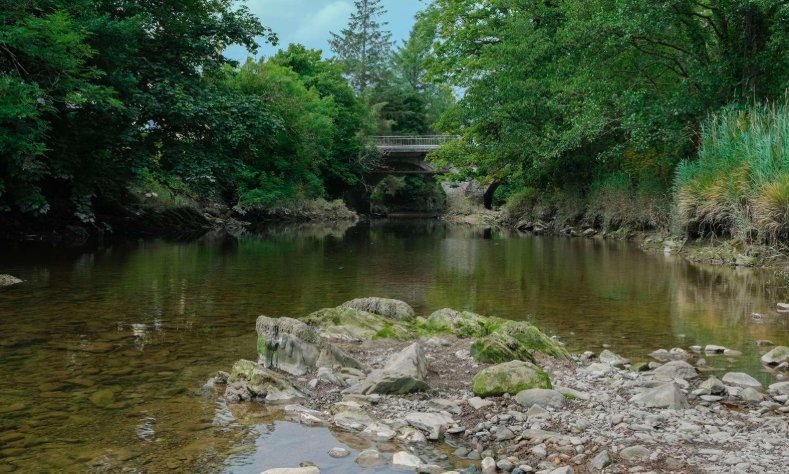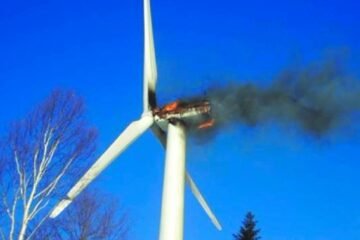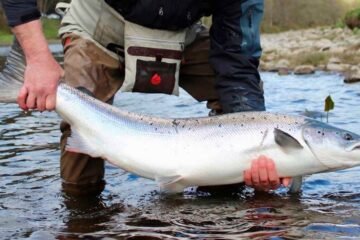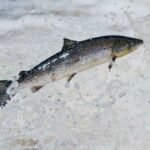The Scottish Environment Protection Agency has raised the alarm after new data showed parts of the country’s river network are under serious pressure — even after recent rainfall. One northern river has already crossed a key environmental threshold, signalling deepening drought concerns.
One River Hits ‘Significant Water Scarcity’
It’s official: the River Helmsdale in Sutherland has now entered Significant Water Scarcity, SEPA confirmed this week. That’s not just a bureaucratic label — it means that river flows have dropped below a recognised low-flow level for 30 straight days.
The benchmark here is known as Q95 — the level that’s exceeded 95% of the time, based on 30 years of flow records. It’s a widely used red flag in hydrology. When flows stay below that line for a full month, alarm bells ring.
And in Helmsdale’s case, that’s exactly what’s happened.

What Is Q95 and Why It Matters
Think of Q95 like a pressure gauge for Scotland’s rivers. It’s calculated using long-term data, usually spanning 30 years. For Helmsdale, that means comparing daily flows to records from 1991 to 2020.
So when flow levels sit in the lowest 5% of that record — and do so for a full month — the river is under clear stress.
And it’s not just a statistical quirk. At that point, SEPA says, aquatic life and surrounding ecosystems face a much higher risk of damage. The longer it continues, the greater the potential for harm.
Not Just One River Under Watch
SEPA’s concerns don’t stop at Helmsdale. There’s growing pressure on the River Wick in nearby Caithness, which is expected to tip into significant scarcity by early next week.
Eilidh Johnston, who leads SEPA’s work on water and rural economy, says the risk is growing.
“This is why our science matters,” she said. “Even with the rain we’ve had, some rivers are still under stress.”
Here’s a quick snapshot of where things stand now:
-
River Helmsdale: Already at Significant Water Scarcity (Q95 breach for 30+ days)
-
River Wick: Likely to follow in days
-
Northern catchments: Overall showing continued low flow pressures
SEPA’s Tools and Data-Driven Response
SEPA is using its Drought Risk Assessment Tool (DRAT) to track water conditions. This system pulls in river flow data from hundreds of monitoring sites across the country.
Unlike traditional seasonal monitoring, DRAT reacts in real-time. That allows SEPA to guide its decisions using up-to-the-minute environmental data — not just forecasts or assumptions.
So far, no regulatory action has been triggered in Helmsdale. That’s because all licensed abstractors already return water to the river — so the net loss is minimal.
But the same might not hold true in Wick.
Who’s Being Contacted — and Why
In Wick, SEPA has already started contacting water users who could be affected. That includes everyone from farmers and fishery managers to golf courses and distilleries. If restrictions are needed, they’ll be informed first.
Here’s who SEPA has spoken to in recent months:
-
NFU Scotland (National Farmers Union)
-
Scottish Golf
-
Fisheries Management Scotland
-
Scotch Whisky Association
SEPA’s message? Start planning early. Don’t wait for the restrictions.
Pressure Mounts on Water-Dependent Sectors
Scotland’s rivers aren’t just scenic. They’re a lifeline for entire industries. Whisky, farming, fishing — all rely on abstraction (the process of taking water from the environment for use).
SEPA says many abstractors are already making changes:
-
Golf courses using smart irrigation and cutting water use
-
Distilleries adjusting water recycling systems
-
Farmers storing water during wet spells for dry-season use
That kind of cooperation is critical. SEPA doesn’t want to police its way through the summer. But if conditions worsen, they will step in.
Table: Key Water Scarcity Classifications by SEPA
| Status | Criteria | Regulatory Action |
|---|---|---|
| Normal Conditions | Flow within historical norms | None |
| Early Warning | Signs of drying, but not critical | Monitoring begins |
| Alert | Sustained low flows likely | Engagement with abstractors |
| Moderate Scarcity | Flows low for extended periods | Possible restrictions |
| Significant Scarcity | Q95 threshold breached for 30+ days | Stronger measures possible |
This isn’t the first time Scottish rivers have dipped into trouble — but the timing is worrying. Normally, May and June bring plenty of recharge for rivers. This year, the rainfall has been patchy and hasn’t soaked into the system the way it used to.
One official at SEPA, who asked not to be named, said privately that “we’re starting to see these conditions more often — and earlier in the year.”
Could that point to long-term climate shifts? Quite possibly. Scotland’s Environment Strategy already flags water resilience as a priority. More erratic rainfall, hotter summers, and longer dry spells all increase stress on river systems.
And the truth is, even a few weeks of low rainfall can tip the balance.
What Comes Next
For now, SEPA’s message is measured but firm: pay attention to the data. Cooperate early. Reduce risk where you can. They’re keeping the pressure on where it’s needed — not with fines or sudden bans, but with science.
But if more rivers hit Q95? Action won’t just be on the table — it’ll be mandatory.


















